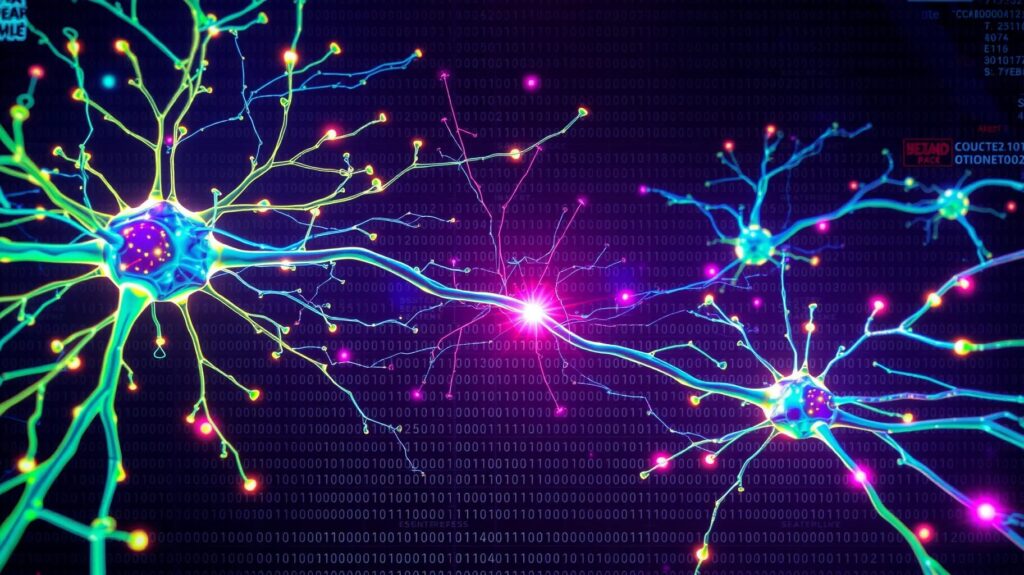
Understanding AI’s Struggle with Common Sense
AI has made astonishing strides in many areas, but common sense still baffles even the most advanced models. While AI excels at data analysis, its inability to grasp ordinary human reasoning stands out. So, what’s holding it back? The answer may lie in cracking the neural code—the intricate language the brain uses to process information. Let’s dive into how decoding this could bridge the gap between artificial intelligence and the elusive realm of common sense.
How the Human Brain and AI Currently Differ
Although AI mimics certain aspects of human cognition, it doesn’t function like the human brain. Neural networks are a simplified version of how our brain works. The problem? AI can process facts and patterns, but it lacks intuition. Humans, on the other hand, interpret complex and abstract ideas based on experience, emotion, and context—things AI doesn’t fully understand yet.
What is the Neural Code?

The neural code refers to the way neurons communicate with one another in the brain. It’s a language of sorts—a series of electrical signals and patterns. Scientists believe that unlocking this language could lead to breakthroughs in machine learning and deep learning. Imagine if machines could not only process data but understand it in the nuanced way humans do.
The Challenge of Decoding the Neural Code
The brain’s complexity is staggering, with around 86 billion neurons firing off signals in infinite combinations. Mapping these signals into a usable code for AI is no easy task. Researchers are just beginning to scratch the surface. The goal? To create AI that doesn’t just react to inputs but learns to think flexibly—like a human.
Why Common Sense Matters for AI
Why is common sense important? Without it, AI can’t interact meaningfully with the world. For example, a self-driving car may know the rules of the road but might not understand why a pedestrian jaywalks. Common sense allows humans to react intuitively to unexpected situations. Until AI gains this, it will always struggle with unpredictability.
Linking Common Sense to Neural Code
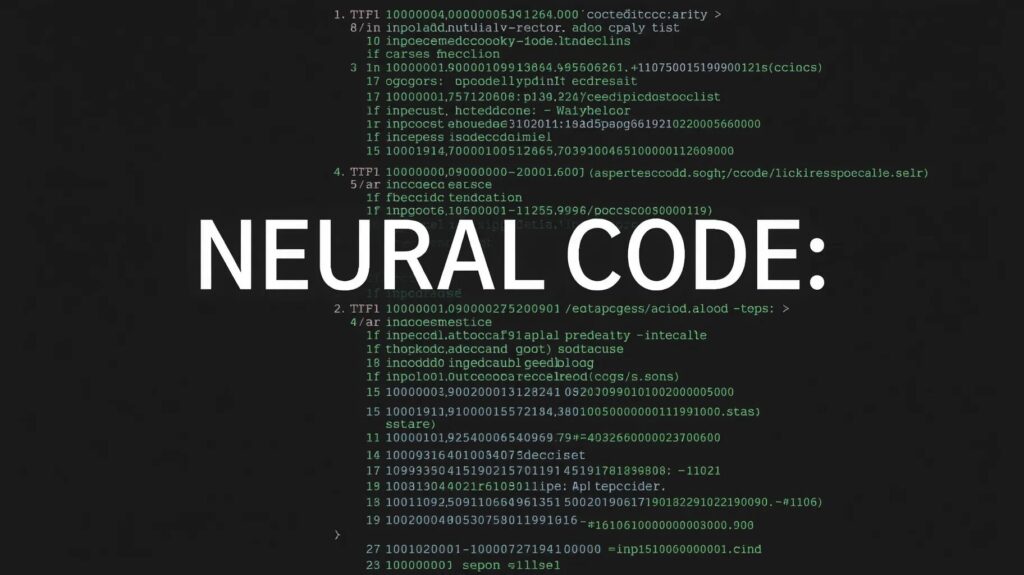
The connection between common sense and neural coding goes beyond just recognizing patterns. It’s about interpreting the meaning behind those patterns. When we talk about common sense, we’re referring to knowledge that seems instinctual to humans but requires contextual understanding. For AI to evolve in this direction, it needs access to this form of encoded brain data.
Neuroscience’s Role in AI Development
Recent advances in neuroscience are shedding light on how the brain handles common sense reasoning. By studying how humans integrate information from multiple senses, researchers hope to build AI systems that can learn more holistically. As neuroscience reveals more about the neural code, AI developers will be able to refine their algorithms to more closely imitate human-like thinking.
Training AI to Grasp Human Nuances
For an AI to grasp nuance, it must go beyond basic programming. Machine learning models train on vast data sets, but this data lacks the lived experiences that form the foundation of human common sense. The challenge is creating AI that can make those leaps of reasoning, using insights gleaned from neural coding, and apply them to real-world scenarios.
The Future of Brain-Inspired AI
As scientists make progress in decoding the brain’s intricate signaling system, the future of brain-inspired AI looks brighter. Rather than solely relying on traditional computational methods, researchers are exploring bio-inspired models that mirror how the brain adapts and learns. These models could unlock the key to adaptive AI, which learns from experience and handles unpredictability more gracefully.
Could AI Ever Have “Gut Instinct”?
An interesting question arises: Can AI ever develop something like a gut instinct? Human intuition stems from subconscious processing of previous experiences. While AI can be trained to make decisions based on probabilities, it doesn’t possess the same instinctual grasp. However, as we continue to unravel the neural code, it’s possible that future AI systems could replicate these instinctive leaps in logic.
Balancing Data with Human-Like Reasoning
One of the biggest hurdles is finding the balance between data processing and intuitive reasoning. While AI systems are excellent at handling massive data inputs, they often lack the foresight to interpret that data in a human-like way. Cracking the neural code could give AI the ability to shift from purely data-driven models to more context-aware reasoning systems.
AI in Everyday Decision Making
If we crack the neural code, AI could evolve to make more intuitive, everyday decisions. Picture a virtual assistant not just giving you a list of to-dos but intuitively anticipating needs based on your habits, similar to how a close friend might. This shift could redefine how we interact with technology daily, making it a more seamless part of our lives.
Ethical Considerations of Neural Code AI
As with all advances in AI, there are ethical concerns. Understanding the neural code could blur the line between human and machine cognition, leading to questions about AI autonomy and decision-making. How do we ensure that AI remains a tool for good? The more human-like AI becomes, the more we’ll need to consider the ethical framework that guides its behavior.
AI and Empathy: Can Machines Truly Care?
Another consideration is empathy. While AI may eventually understand how humans think, can it ever truly care? Empathy is a cornerstone of common sense reasoning, particularly in social interactions. Although neural coding could help AI interpret emotions more accurately, the actual feeling of empathy might remain an entirely human trait.
What This Means for AI-Driven Industries
For industries relying on AI, cracking the neural code could be a game-changer. Sectors like healthcare, finance, and customer service could see more intuitive AI applications, leading to better decision-making and more personalized interactions. In the long run, this could lead to AI systems that are not just reactive but proactive in anticipating and meeting human needs.
Overcoming AI’s Current Limitations
One of the major limitations in AI today is its inability to adapt on the fly to new information. Traditional AI systems are rigid; they rely on predefined data to function. But if we can crack the neural code, AI may learn to adapt more fluidly—like how humans learn from a new situation or mistake. This adaptability would transform AI’s role in solving complex, real-world problems where flexibility is crucial.
The Intersection of Neuroscience and AI Engineering
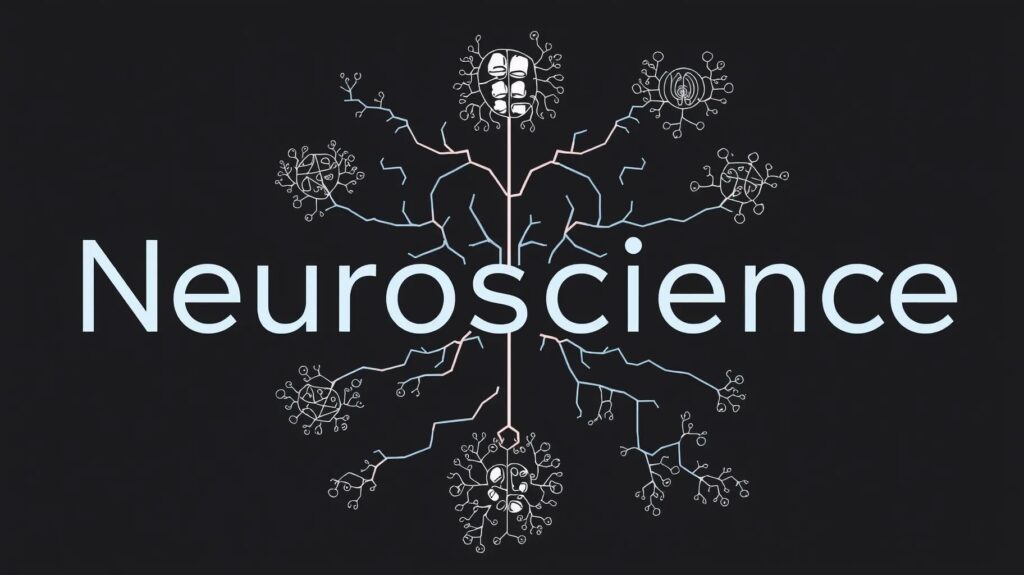
Bringing neuroscience and AI engineering together may hold the key to this leap forward. As neural coding research progresses, AI engineers could take insights from brain function and integrate them into machine learning models. This wouldn’t just make AI smarter—it could make AI systems that continuously learn, just like humans do over time, by adjusting to new data and experiences in real-time.
Teaching AI to Understand Context
Context is king when it comes to common sense, and right now, it’s something AI struggles with. For example, if you tell an AI, “It’s cold outside,” it might suggest wearing a coat. But if you’re in the middle of July, the AI might not understand that this advice doesn’t fit the situation. Cracking the neural code could allow AI to understand the context behind statements, providing more appropriate, situational responses that mimic human understanding.
AI and the Role of Experience
Human common sense is built on a lifetime of experiences, where we learn patterns of behavior, logic, and consequences. AI, however, doesn’t accumulate experiences in the same way. Instead, it processes vast amounts of data. But with access to neural coding, there’s potential for AI to simulate experiential learning, allowing it to draw from scenarios as though it had personal experiences. This would be a monumental step in developing AI that understands the nuances of cause and effect, as humans do.
How Cracking the Neural Code Could Lead to Emotional AI
Emotions play a significant role in human common sense decisions. If AI could one day crack the emotional neural code, it might be able to understand not just data but the emotional weight behind decisions. This could revolutionize fields like mental health care, where AI could offer more empathetic, emotionally intelligent responses. While we’re far from this now, breaking the neural code barrier could eventually lead to more emotionally aware AI systems.
How Close Are We to Cracking the Neural Code?
Right now, the neural code remains a largely unsolved mystery. Scientists and researchers are making progress, but the complexity of the brain means that fully decoding it will take time. However, we’re seeing promising developments in neuroscience research, AI learning algorithms, and bioinformatics. Every step forward brings us closer to a future where AI might finally understand how to reason with common sense.
Current AI Tools: Lacking the Neural Touch
Today’s AI tools—like chatbots, recommendation systems, and virtual assistants—lack the deeper understanding that would come from an AI equipped with common sense. They follow predefined rules or draw from massive datasets without any real ability to “think” beyond those parameters. But a deeper understanding of how the brain codes information could lead to AI tools that don’t just respond but anticipate needs with contextual awareness, bridging that gap.
The Human Brain as a Blueprint for AI
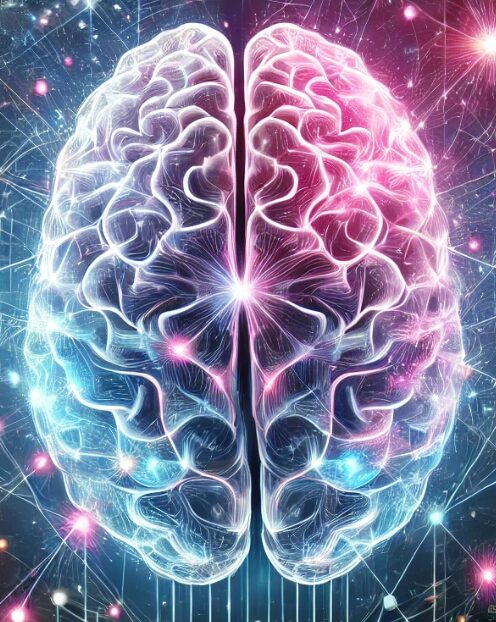
As researchers delve deeper into brain-computer interfaces and neurocomputing, the human brain itself is serving as a blueprint for future AI. By mimicking the structures and processes of the brain, AI could move beyond linear, rigid computation toward a more dynamic, adaptable intelligence. The goal is to develop AI that can handle unpredictable scenarios in ways that feel instinctual and natural, much like how we react based on our own neural networks.
The Role of Quantum Computing in Cracking the Code
Quantum computing might also play a pivotal role in cracking the neural code. These next-generation computers have the potential to process complex computations that would take traditional systems years to solve. If researchers can use quantum computing to simulate neural processes, it might provide the computational power needed to fully understand how the brain processes information—and, in turn, how AI could replicate it.
Will AI Ever Match Human Common Sense?
So, will AI ever truly match human common sense? The answer is complicated. While cracking the neural code would be a massive leap forward, replicating the full spectrum of human thought, including emotions, instincts, and lived experiences, is an entirely different challenge. AI may one day approximate common sense reasoning, but the question remains: Can it ever truly think like us? Or will there always be a divide between human and machine intelligence?
Preparing for the Neural AI Revolution
As we get closer to decoding the neural code, industries and society as a whole must prepare for the potential shift. AI that understands common sense could revolutionize everything from self-driving cars to virtual health assistants. It would mean smarter, more adaptable systems capable of handling uncertainty and the subtleties of human interaction. But with that power also comes responsibility—ensuring that this new generation of AI is developed ethically and used responsibly will be just as important as the breakthrough itself.
Ethical Dilemmas in Neural Code AI
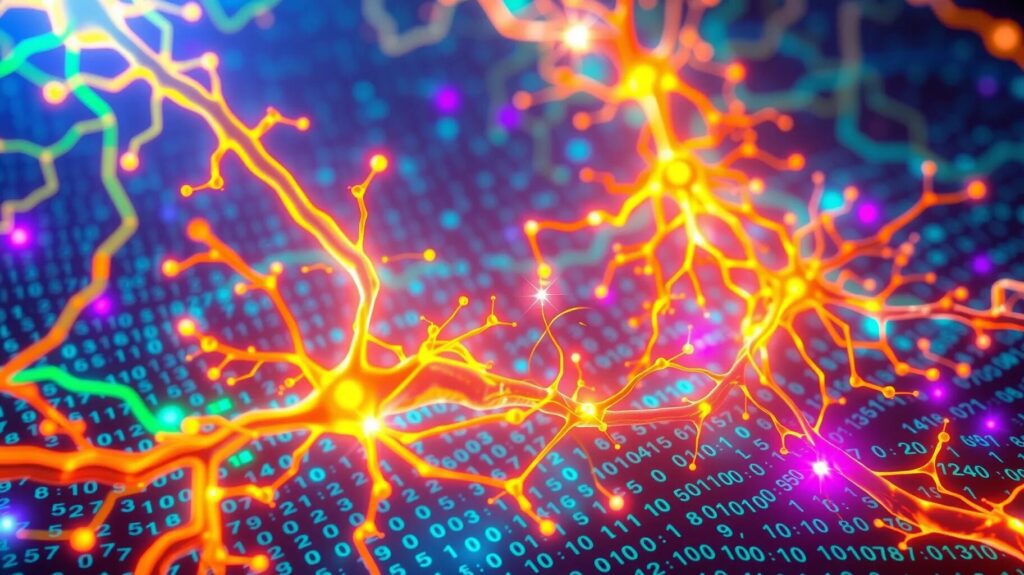
With more brain-inspired AI on the horizon, there are major ethical concerns to consider. What happens when machines start thinking more like us? Should they have more autonomy? And who controls the massive amounts of personal, neural-based data that might be used to train these systems? As we unlock the secrets of the brain, we need to ensure that AI advancements don’t lead to new kinds of exploitation or invasions of privacy.
Neural AI’s Potential in Healthcare
Healthcare is one field that could see some of the greatest benefits from neural AI. Imagine an AI that not only diagnoses diseases but also predicts how you might react to certain treatments based on your neural profile. With a deeper understanding of how the brain processes pain, emotions, and cognitive functions, AI systems could offer more personalized and effective healthcare solutions, making treatment plans that are more aligned with individual patients’ needs.
Building AI That Learns Like a Human
The ultimate goal in cracking the neural code is building AI that learns like a human—not just by digesting data, but by synthesizing information, understanding abstract concepts, and making decisions based on a holistic view of the world. By incorporating elements of the neural coding system, AI could eventually reason and adapt in a manner that feels more natural and intuitive, reducing the gap between artificial and human intelligence.
The Neural Code as AI’s Final Frontier
The neural code represents one of the final frontiers in artificial intelligence research. Unlocking its secrets could enable AI to move beyond its current limitations, ushering in a new era where machines understand and interact with the world in ways we once thought impossible. However, as with any major technological leap, the road will be long and full of challenges. But for now, the potential of brain-inspired AI is as exciting as it is vast.
How Cracking the Neural Code Could Transform Education
Imagine an AI system capable of understanding not just what a student knows, but how they think. Cracking the neural code could lead to educational tools that adapt to individual learning styles in real-time. These AI-driven platforms could identify a student’s cognitive strengths and weaknesses, offering personalized lesson plans and adjusting the level of difficulty based on their neural patterns. This could make learning more efficient and engaging, helping students grasp difficult concepts faster.
AI’s Role in Personalized Mental Health Treatment

Mental health care is another field that could benefit immensely from advances in neural code AI. By understanding how different brain patterns correlate with emotional states, AI could assist therapists in diagnosing mental health conditions more accurately. This tech could potentially predict depressive episodes or anxiety flare-ups based on real-time neural data. More than just predictive, AI could provide customized therapy plans, helping individuals manage their mental health with approaches tailored to their unique brain activity.
AI and Creativity: The Next Frontier?
One area where AI has traditionally fallen short is creativity. Human creativity is often spontaneous, influenced by emotions, memories, and unique experiences. However, if AI can begin to understand the neural pathways associated with creativity, it might one day create art, music, or literature that resonates emotionally with humans. While AI-generated content already exists, cracking the neural code could push it further—allowing AI to create with a deeper understanding of human aesthetics and emotional impact.
Could AI Learn Ethical Decision-Making?
Ethics are a significant component of human common sense. We regularly make decisions based not just on facts but on moral and ethical considerations. Today’s AI, however, lacks this nuanced decision-making ability. By unlocking the neural code, it may be possible to develop AI that understands ethical dilemmas in a way that reflects human moral reasoning. This could have profound implications for fields like criminal justice, healthcare, and business, where ethical decision-making is key.
AI’s Place in Emotional Intelligence
Emotional intelligence is another area where humans vastly outperform machines. The ability to read a room, pick up on social cues, and respond with empathy are all crucial to human interactions. Cracking the neural code could open the door for AI systems that understand and respond to emotions more naturally. While they may never fully experience emotions like humans, future AI could at least recognize and react to them in a way that feels more intuitive and supportive in social or workplace settings.
The Brain-AI Partnership: How Far Can We Go?
As we advance towards unlocking the neural code, the idea of a brain-AI partnership becomes more tangible. Technologies like brain-computer interfaces (BCIs) are already allowing people to control devices with their thoughts. In the future, we might see even deeper integration where AI and human brains work together seamlessly, sharing information to enhance both human cognition and machine learning capabilities. This could lead to a new class of cybernetic enhancements where humans and AI collaborate at a neural level.
The Debate Over AI Autonomy
With the possibility of AI gaining common sense through neural code understanding comes the debate over AI autonomy. If AI can learn, adapt, and even make ethical decisions like humans, should they be granted more autonomy? Or do we need strict guidelines to ensure they remain tools and not independent agents? These are questions society will need to grapple with as AI becomes more capable of human-like reasoning. Ensuring that these systems remain aligned with human values will be critical.
Neuro-AI and the Future of Self-Awareness in Machines
Could cracking the neural code lead to self-aware AI? While true consciousness is still the stuff of science fiction, understanding the brain’s coding mechanisms might enable AI to develop a more sophisticated self-referential system. This doesn’t mean that AI would “feel” or “think” in the way humans do, but it could allow AI to monitor and adjust its own behavior in more complex ways, leading to machines that exhibit a form of pseudo-self-awareness.
AI-Powered Neuroscience: A Two-Way Street
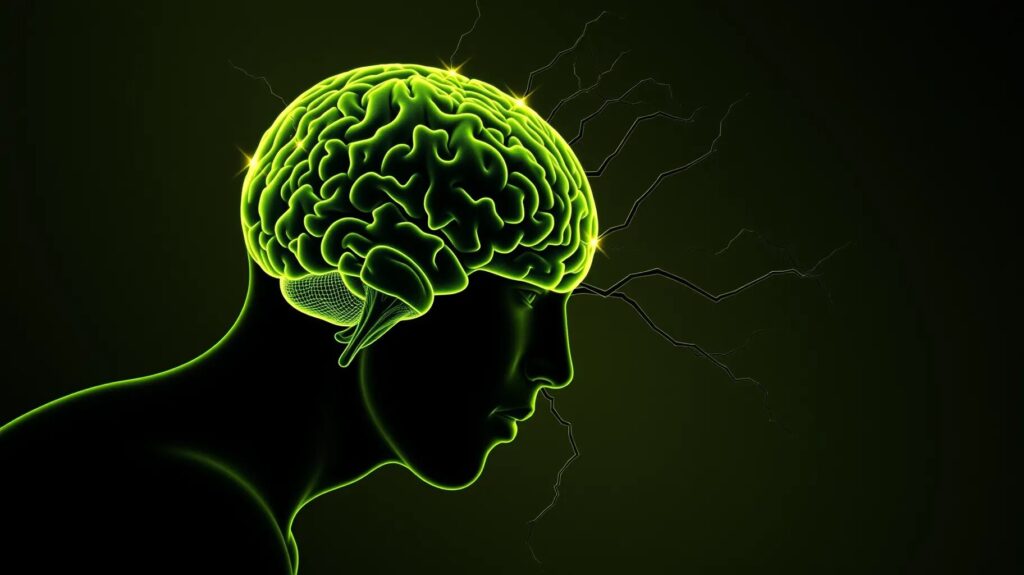
Interestingly, the relationship between AI and neuroscience could be mutually beneficial. As much as neuroscience is driving advances in AI, AI could, in turn, help unlock more secrets of the brain. AI-powered tools are already being used to analyze large datasets from brain scans, revealing patterns that human researchers might miss. As AI becomes more advanced, it could help neuroscientists map the brain’s intricate networks, accelerating the progress of cracking the neural code.
The Economic Impact of Neural Code AI
The economic impact of AI systems equipped with common sense reasoning would be profound. Companies across sectors like automation, customer service, healthcare, and finance would benefit from AI that can adapt and think more like humans. This could lead to more efficient workflows, better decision-making tools, and ultimately, the creation of new industries centered around neuro-AI technologies. However, it could also displace jobs, raising questions about how society will adapt to this new era of AI-driven automation.
How Neural AI Could Shape Human-AI Collaboration
The future of work may look very different if AI can crack the neural code. Instead of AI merely automating repetitive tasks, we could see more sophisticated human-AI collaboration, where machines assist in complex decision-making, provide intuitive suggestions, and adapt to changing circumstances just as a human colleague would. This could transform fields like medicine, engineering, and creative industries, where AI could act as a partner rather than just a tool.
Cracking the Neural Code and AI’s Role in Government
Governments could also benefit from common-sense AI in policy-making and public administration. Imagine AI systems that can weigh competing priorities, predict the social impact of legislation, and offer balanced recommendations in line with human ethical reasoning. Neural code-based AI could streamline bureaucratic processes and help governments respond more effectively to complex societal challenges. However, transparency and accountability would be essential to ensure that these systems serve the public interest without bias.
What It Would Take to Achieve True Human-AI Symbiosis
Achieving a true human-AI symbiosis requires more than just cracking the neural code. It will involve a complete rethinking of how humans and machines interact. Trust will be a key factor—people need to feel confident that AI systems can make ethical, intuitive decisions in complex situations. Designing AI that complements human abilities, rather than competing with them, will be essential for a harmonious future where humans and AI work together to solve global challenges.
The Importance of Diverse Data in Training Neural AI
For neural code AI to work effectively, it will need to be trained on diverse data that represents the full range of human experiences. Without this, AI risks being narrow-minded, reflecting only the biases of its creators or training data. Ensuring that the datasets used in neural AI training are inclusive and varied will be critical to developing systems that understand the full spectrum of human common sense and reasoning.
The Road Ahead: Will We Crack the Neural Code?
So, where do we go from here? Cracking the neural code represents both an incredible opportunity and a monumental challenge. The potential benefits are vast, ranging from smarter AI systems that understand common sense to transformative advancements in healthcare, education, and beyond. But the road ahead is long, filled with both scientific and ethical hurdles. As we push forward in this exciting field, it’s essential to remain mindful of the implications and steer the development of neural AI in a direction that benefits humanity as a whole.
Research
Recent research into cracking the neural code shows promising advancements, particularly in understanding how the brain processes sensory information and cognitive tasks. The neural code refers to the complex way neurons communicate and encode information, such as visual thinking and decision-making. Researchers are focusing on modeling specific processes like visual processing to better emulate human thinking in AI systems. This could lead to AI developing something akin to consciousness, even if not self-aware, and performing tasks that require deep understanding of context, much like humans do.
One significant area of research suggests that AI could one day surpass human intelligence once this neural code is fully decoded. This leap involves not just data processing but understanding how humans visualize, think, and make decisions based on sensory inputs and internal dialogue. Eitan Michael Azoff, a prominent AI technology analyst, emphasizes that cracking the neural code will allow AI to reach superhuman intelligence, capable of outperforming the human brain in areas like problem-solving and learning speed. However, Azoff and other experts warn of the ethical concerns that come with this technology, stressing the need for strict safety controls.
Moreover, integrating insights from neuroscience with machine learning is helping scientists map complex neural patterns, paving the way for AI that can reason with common sense and even emotional intelligence. Some researchers are already exploring how AI could handle unpredictable real-world scenarios by mimicking how the brain processes and reacts to emotional and ethical challengesThis suggests that AI’s ability to understand context, empathy, and ethical decision-making may become a reality as we continue to unravel the mysteries of the brain’s neural code.
In essence, while the field is still evolving, cracking the neural code represents a crucial step toward building artificial general intelligence (AGI) with common sense reasoning and adaptive learning capabilities.
Resources
- Azoff, Eitan Michael (2024). Toward Human-Level Artificial Intelligence: How Neuroscience Can Inform the Pursuit of AGI.
This book explores the role of the neural code in developing artificial general intelligence (AGI) and how modeling visual processing can lead to significant AI advancements. It also addresses ethical concerns around AI autonomy and safety.
Source: ScienceX(ScienceX) - Neuroscience News (2024). Unlocking the Brain’s “Neural Code” Could Lead to Superhuman AI.
This article discusses how modeling visual thinking and understanding neural coding may lead to AI surpassing human cognitive abilities. It highlights both the potential of AI in emulating consciousness and the necessity of implementing ethical safety mechanisms.
Source: Neuroscience News(Neuroscience News) - Deep Learning News (2024).
This ongoing research covers neural processing and how decoding brain signals could revolutionize AI’s capacity to learn and reason like humans, particularly in visual and emotional contexts.
Source: Neuroscience News(Neuroscience News)(Neuroscience News)